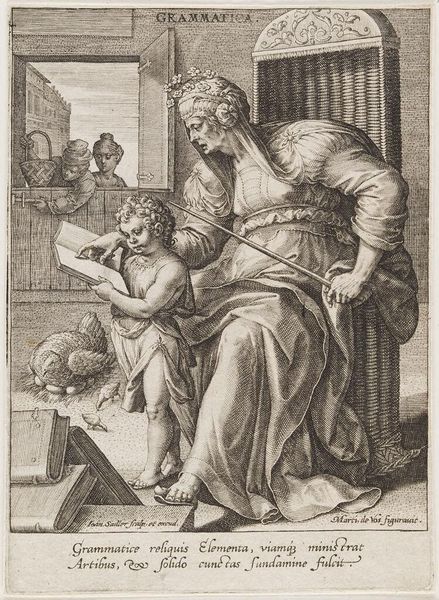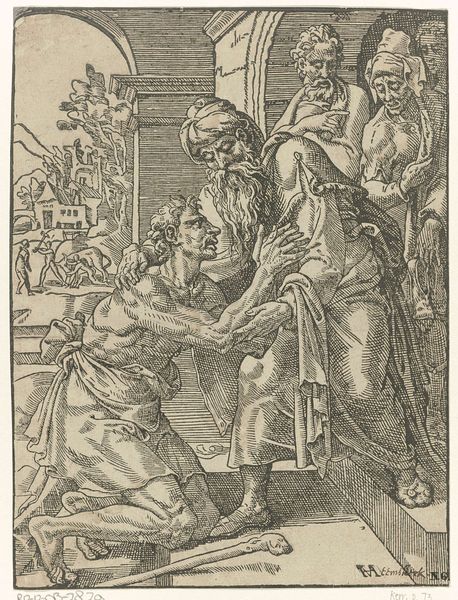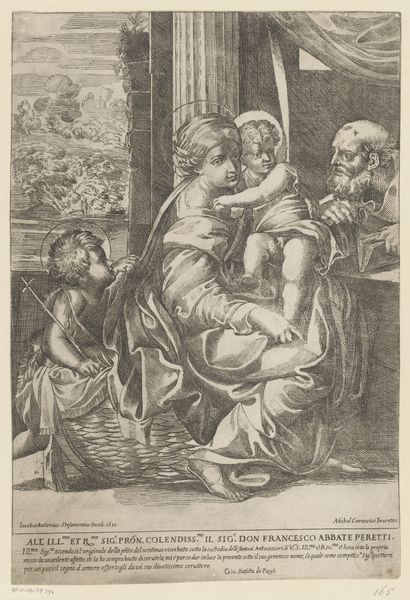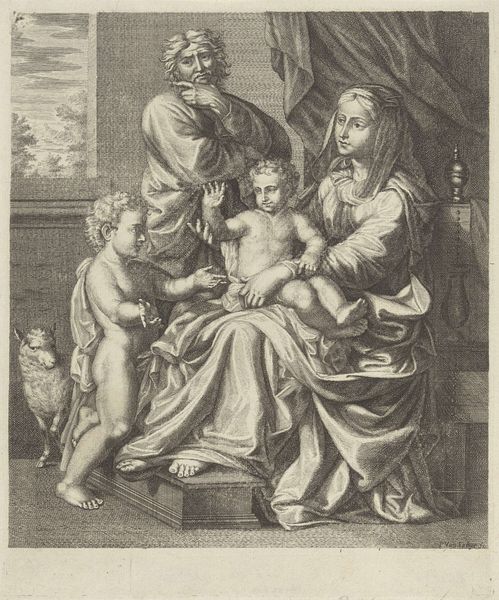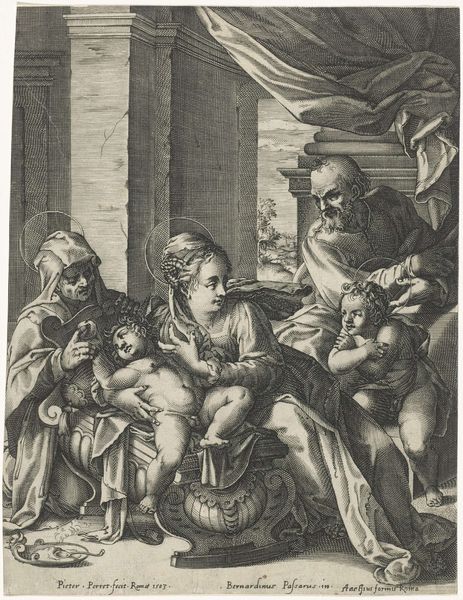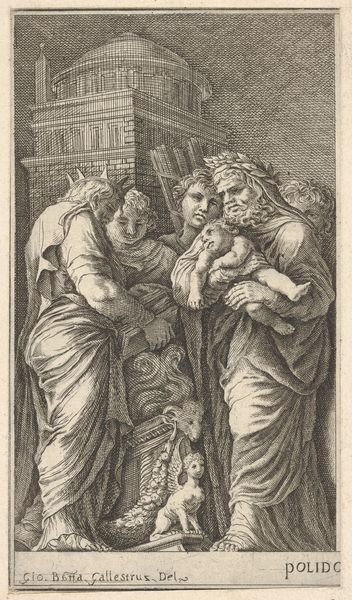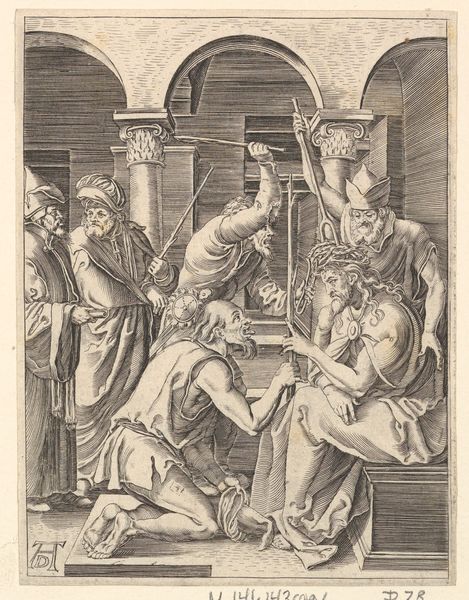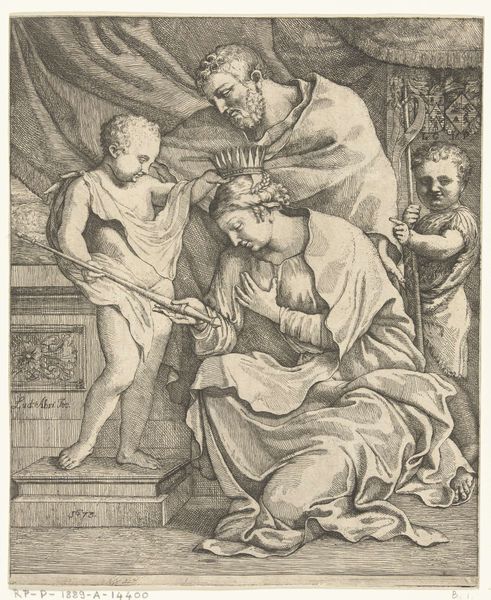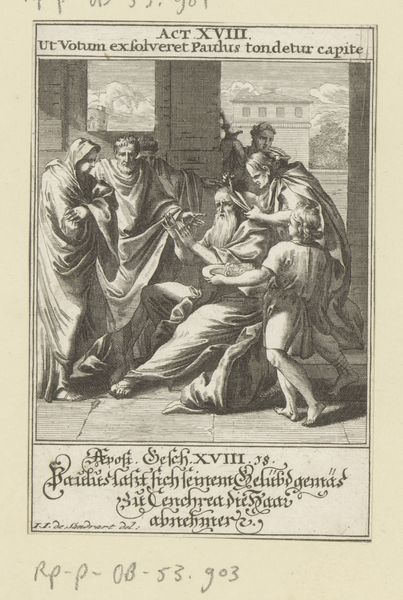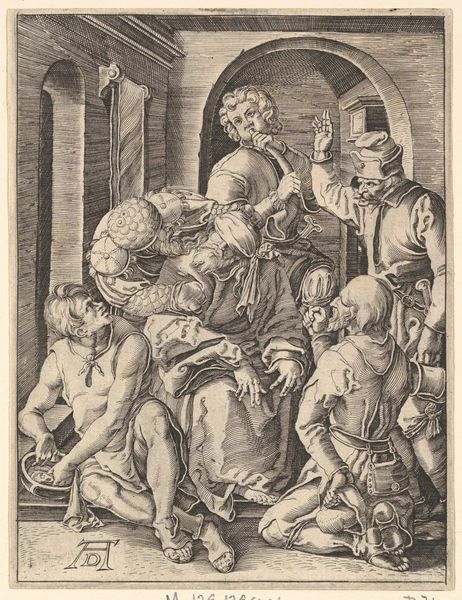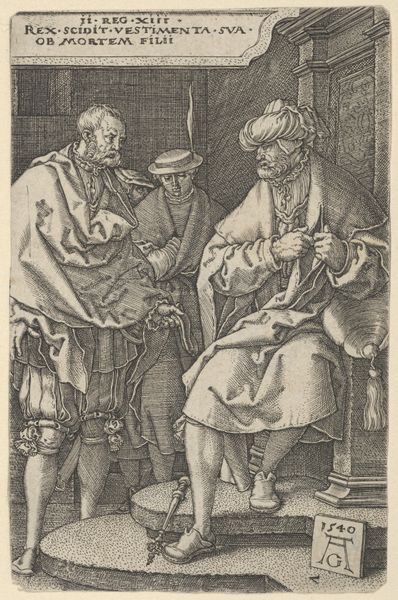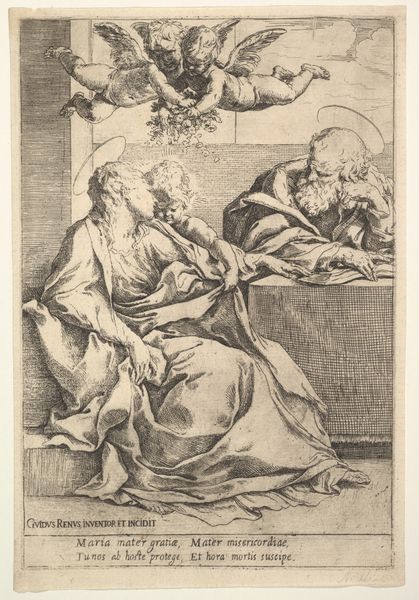
drawing, print, engraving
#
portrait
#
drawing
#
allegory
# print
#
mannerism
#
figuration
#
child
#
history-painting
#
engraving
Dimensions: Sheet (Trimmed): 5 7/8 × 4 1/8 in. (14.9 × 10.5 cm)
Copyright: Public Domain
Curator: This engraving, "Grammatica, from The Seven Liberal Arts", dates back to between 1565 and 1600 and is attributed to Johann Sadeler I. The medium itself—the printed line, the repeatable image—speaks to the dissemination of knowledge and classical ideals that defines this period. Editor: Immediately, I’m struck by the stillness. There’s a sort of intense focus radiating from the figures, a hushed reverence for the act of learning itself. The intricate linework creates this incredible texture. Curator: Observe how Sadeler, working in the Mannerist style, uses allegorical figuration to represent Grammar. We see a woman, adorned with flowers symbolizing eloquence, guiding a child through a book. Notice, too, the tools around them—books stacked as foundational support. The material weight given to the act of reading is so powerful. Editor: Absolutely. It feels as if the woman isn’t just teaching the child to read, but rather initiating them into the mysteries of the written word. Even the presence of the chicken, clucking near her brood, creates a homely contrast to the highly stylized woman and child. Like it’s tethering the idea of grammar to the everyday. What do you make of that, the chicken motif I mean? Curator: Well, considering this image as a produced object in a domestic context opens many possibilities. Chickens can be about household sustenance but they're also known for scratching for food in the dirt. It almost serves as a subtle, perhaps even ironic, commentary on the very foundation of knowledge acquisition! Look at the people out of the window too... Editor: Fascinating! It makes me think, doesn't all learning scratch the surface? Curator: I agree. By engaging with prints like these, analyzing their production and the societal consumption surrounding them, we uncover complex interactions between education, labor, and the Renaissance mindset. Editor: It’s as if the image itself is a tiny portal to the past, filled with textures and details hinting at layers of history. You’ve provided much "food for thought" on this allegorical world indeed.
Comments
No comments
Be the first to comment and join the conversation on the ultimate creative platform.
